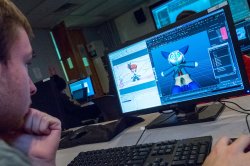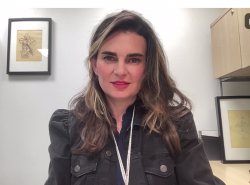How would you like to build the digital worlds you see in the movies or your favorite TV shows? Think you have what it takes to design the next great video game?
If you want to develop truly immersive experiences that move the needle, then Montclair’s Animation and Visual Effects program is for you.
You’ll utilize our state-of-the-art facilities and hone your skills in 2D and 3D animation, game development, immersive storytelling and visual effects, and create work that you’ll be able to show in your first interview for that killer internship or first job. You’ll also have access to the bright lights of New York and some of the biggest companies in the world, sitting just 12 miles away.
Our world-class faculty will help you harness your talent and creativity and turn it into jaw-dropping animation and eye-popping effects.
The only question for you is – are you ready to create the digital experiences that will change the world?
Apply NowRequest Info


